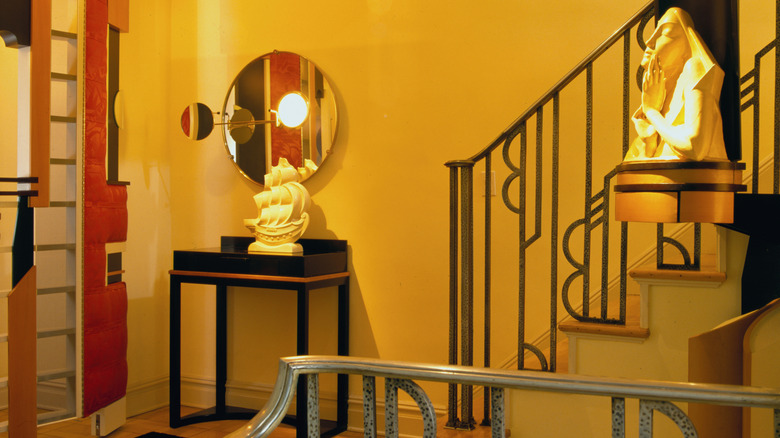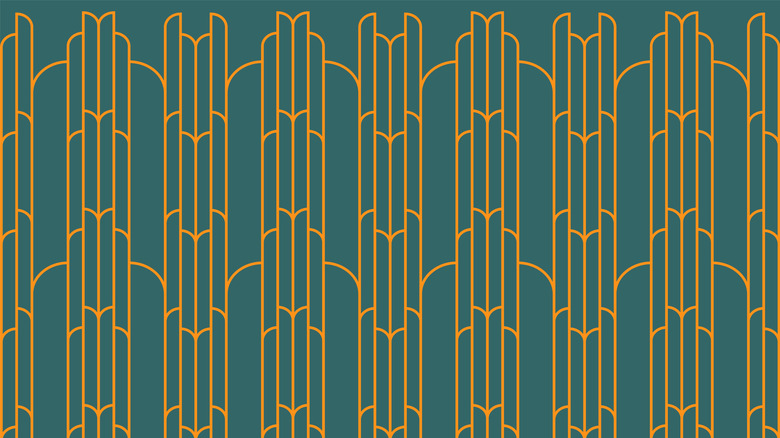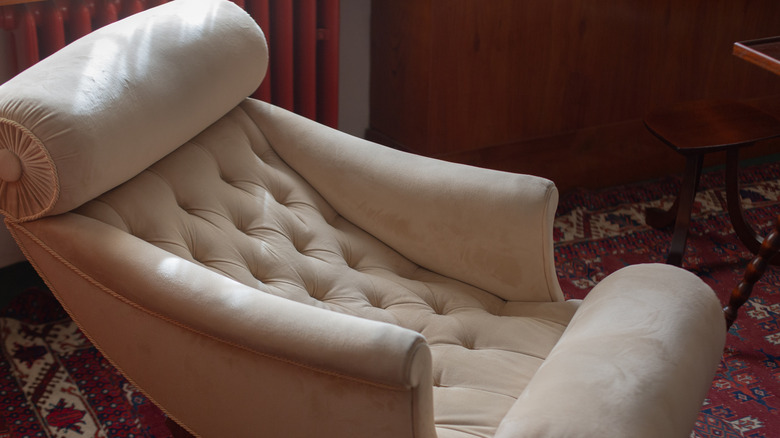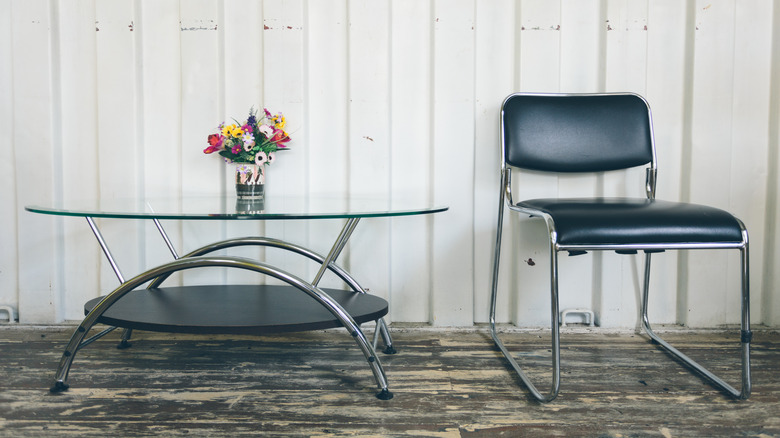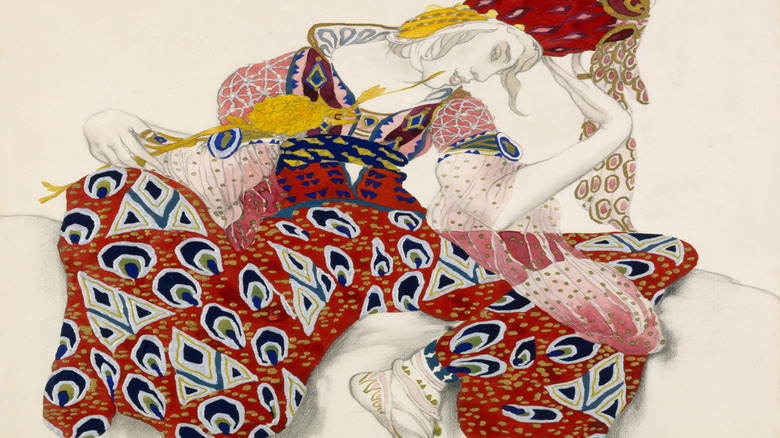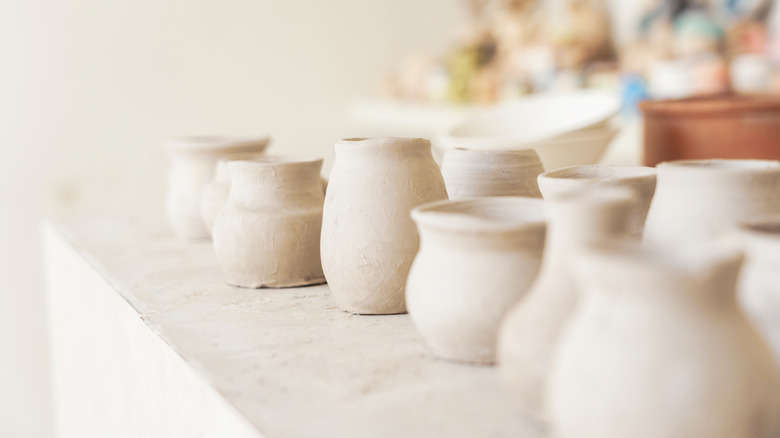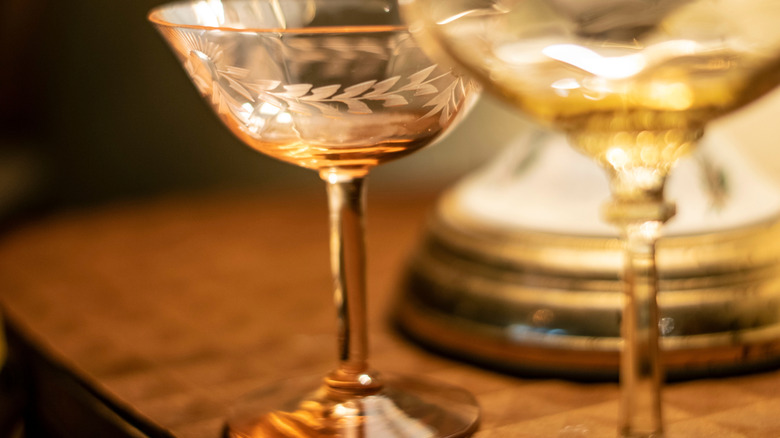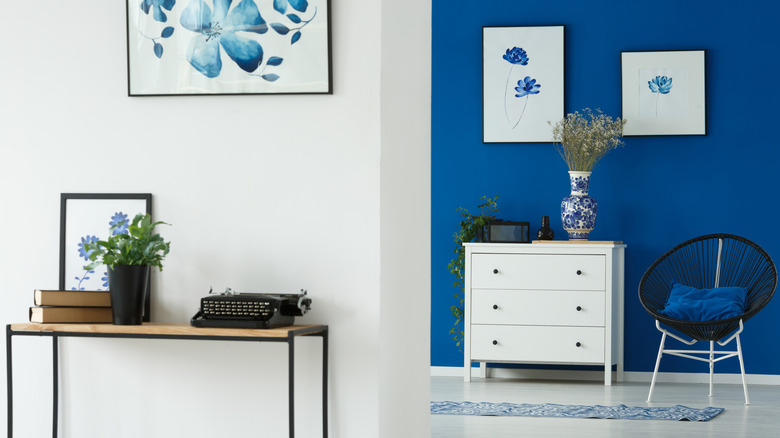The Roaring '20s Are Back Architecturally: How To Add The Style To Your Home Decor
Early 20th-century aesthetics, such as 1930s Depression era interior styles, make gorgeous home decor choices, especially when coupled with a modern 21st-century twist, so it's exciting to see decor from the 1920s gaining momentum as a popular decorating choice again in 2025. Architect John Ike of the bicoastal firm Ike Baker Velten has identified Roaring '20s style as a top emerging trend — and for good reason.
"I have a strong appreciation for the architecture of the 1920s and 1930s — early modernism combined with meticulously detailed, restrained traditional styles," Ike told House Beautiful earlier this year. "There was a real sense of craftsmanship in those designs."
The 1920s style is famous for marrying opulent detail with a new appreciation for clean, simple, minimalist lines. It was a perfect blend of revolutionary, streamlined design movements such as the Bauhaus — which we still see echoes of in today's modern and minimalist interiors – with an interest in Old World art such as the ornamentation found in ancient Egypt. Even if your home isn't built in a 1920s architectural style, you can still bring a taste of early 20th-century elegance to your decor. Here are 15 of our favorite interior trends from the 1920s to get you started.
Play with different geometric shapes
From floors and wallpapers to doors and ceilings, bold geometric patterns were integral to the Art Deco style that emerged in the 1910s and lasted until the 1930s. Take inspiration from the Cubism movement, which had a major influence on Art Deco design, and select a large statement mirror in a sharp, angular shape; or choose wallpaper or tiles with repeating geometric patterns.
Invest in streamlined furniture
1920s home design felt like a breath of fresh air after the cluttered interiors that had been so popular under Victorian-era decor trends. Furniture became more streamlined, emphasizing function and practicality without sacrificing style — or relying on fussy ornamentation. This genre of furniture is still very much in vogue, so you won't have trouble replicating this 1920s trend while meshing well with other contemporary elements.
Incorporate chrome in furniture and decor
Chrome – a type of plating where chromium is applied to the surface to give it some extra shine and protection from scratches and corrosion – was a must-have new material in the 1920s, and as it turns out, it's still all the rage in 2025. Look for minimalist chairs or small, glass side tables made with sleek frames that utilize chrome for a nod to the latter-day '20s that still feels contemporary.
Embrace Ballets Russe-influenced silhouettes
Art Deco inspiration came from many places — including the world-famous Ballets Russes. Founded in Paris by Serge Diaghilev, the ballet company included a melting pot of contributions from many of the greatest artistic geniuses of the era, including designs by Picasso and Matisse, choreography by George Balanchine, and music by Igor Stravinsky. Consequently, the groundbreaking company left its mark on Art Deco aesthetics as well, including sculptural design and decorative pieces. In your own home, look for art and decorative objects that emphasize fluidity of movement as well as theatrical elements such as cascading curtains and drapes.
Explore Egyptian Revival art
Fueled by the 1922 excavation of King Tutankhamun's tomb, Egyptian Revival art, including Egyptian motifs, decorative objects, and angular styles, exploded in the 1920s and was one of the biggest inspirations for Art Deco. As a result, Egyptian aesthetic influences were visible everywhere, from fashion to home decor. To add some ancient Egyptian elegance to your own home in a way that's tasteful, understated, and meshes well with other modern decor, try adding metallic elements such as gold or brass, incorporating art made with natural materials like papyrus, or showcasing artisanal pottery, ceramics, or vases.
Get inspired by Chinese cultural influences
In the 1920s, Chinese-Americans and immigrants to the U.S. from China regularly experienced discrimination and racism, yet Americans' fascination with Egyptian culture during this time was rivaled only by their interest in Chinese cultural aesthetics. Chinese fans, enameled trays, and tea sets, for example, were popular home decor items, and by the early 1920s, the Chinese tile game mahjong was a major hit in many households. In fact, mahjong is once again a popular fixture in contemporary living rooms and gatherings today — and an elegant, fun form of friendly competition.
Try some cheeky speakeasy-style decor
Prohibition — the national ban on the sale, manufacture, and transport of alcohol — went into effect in the U.S. in 1920. But illicit drinking was a hallmark of the 1920s, with cocktail parties replacing tea parties in many circles — especially amongst the elite, where pre-dinner drinks and the ability to mix up a cocktail at home were a must. Try styling a speakeasy area of your own in your living or dining room. Start with a simple bar cart, and deck it out with some accessories deemed essential during the era, such as a cocktail shaker and recipe book.
Decorate with Hollywood glam
The incredibly popular burgeoning film industry of the 1920s also saw the rise of what would become the Golden Age of Hollywood. Silent film stars such as Clara Bow were admired for glamorizing the flapper lifestyle both on and offscreen, while male movie stars such as Rudolph Valentino sparked a frenzy as major heartthrobs. Take some inspiration from the fabulous estates of Old Hollywood and incorporate some Hollywood glamor by decorating with statement chandeliers, rich velvets, black-and-white photography, and decadent drapes.
Embrace old school entertainment
You know the old saying, "everything old is new again"? Despite all our advances in technology, simple audio-only forms of entertainment such as podcasts, radio shows, and audiobooks are all the rage once more. So why not harken back to the 1920s — when families would gather around the radio to listen to their favorite shows, sports, and music – by adding a vintage-style radio to your own living room or kitchen counter? As a bonus, today's radios tend to have old-fashioned flair coupled with modern conveniences such as Bluetooth speakers.
Use bold pops of primary colors
The Bauhaus — an art, design, and architecture school founded in Germany by architect Walter Gropius in 1919 — revolutionized design by making it sleeker, simpler, more functional, and also easier to mass-produce and make more accessible. One key facet of this new design movement was the sparing use of simple, primary colors in interior design. So take a leaf from the old design masters' playbook and use pops of red, yellow, and blue in your home decor for maximum impact, such as a single bright blue chair or yellow rug.
Incorporate sunbursts
Few things scream "Art Deco" more than the sunburst shape, with curved rays fanning out in a bold semicircle. You can still see famous examples of it today, such as on top of the Chrysler Building and inside the theater of Radio City Music Hall in New York; but you can also incorporate some of that sunburst style in your own humble home with a sunburst-backed chair, a sunburst-shaped mirror — or, for some true Art Deco flair, by opting for sunburst-covered wallpaper in a bold geometric pattern.
Hang some industrial art
A hallmark of 1920s design involved blurring the line between urban exterior and interior. Materials usually reserved for architecture, such as steel and iron, were incorporated into furniture and decorative items, and depictions of the skyscrapers being constructed in cities all over the U.S. began being hung on walls in homes as well. For a taste of some of this 1920s style, try displaying prints of your favorite architectural wonders. If you want to go extra authentic, opt for famous buildings from the era, such as Frank Lloyd Wright's Ennis House in Los Angeles, or the Chrysler Building in Manhattan.
Don't be afraid of manufactured goods!
The 1920s also included major developments in manufacturing, with the mass production of goods making furniture and home decor items from department stores readily available to everyday, middle-class Americans for the first time. While handmade and bespoke items are certainly lovely, don't be ashamed of incorporating some of the mass-market stuff in your decor, too. To stay true to the 1920s, try to go for manufacturing items made from materials like chrome, glass, and steel.
Brighten up your space with a neon sign
Neon signs, which were first unveiled in Paris in the early 1900s, made their way to the U.S. in the 1920s and quickly began popping up in cities such as New York's Times Square and Chicago. Try replicating the look with a colorful sign illuminating a favorite phrase or symbol — swapping out the neon for colorful energy-efficient LED lights instead, of course.
Embrace your own individuality and creativity
The 1920s were a decade of radical change. The suffrage movement finally secured women's right to vote, and many of the rigid societal restrictions that had held people back in previous generations were loosening and falling away. So feel free to take some liberties with your home interiors and experiment with whatever funky styles you love best. By doing so, you'll be staying true to the rebellious flapper spirit of the Roaring '20s.
